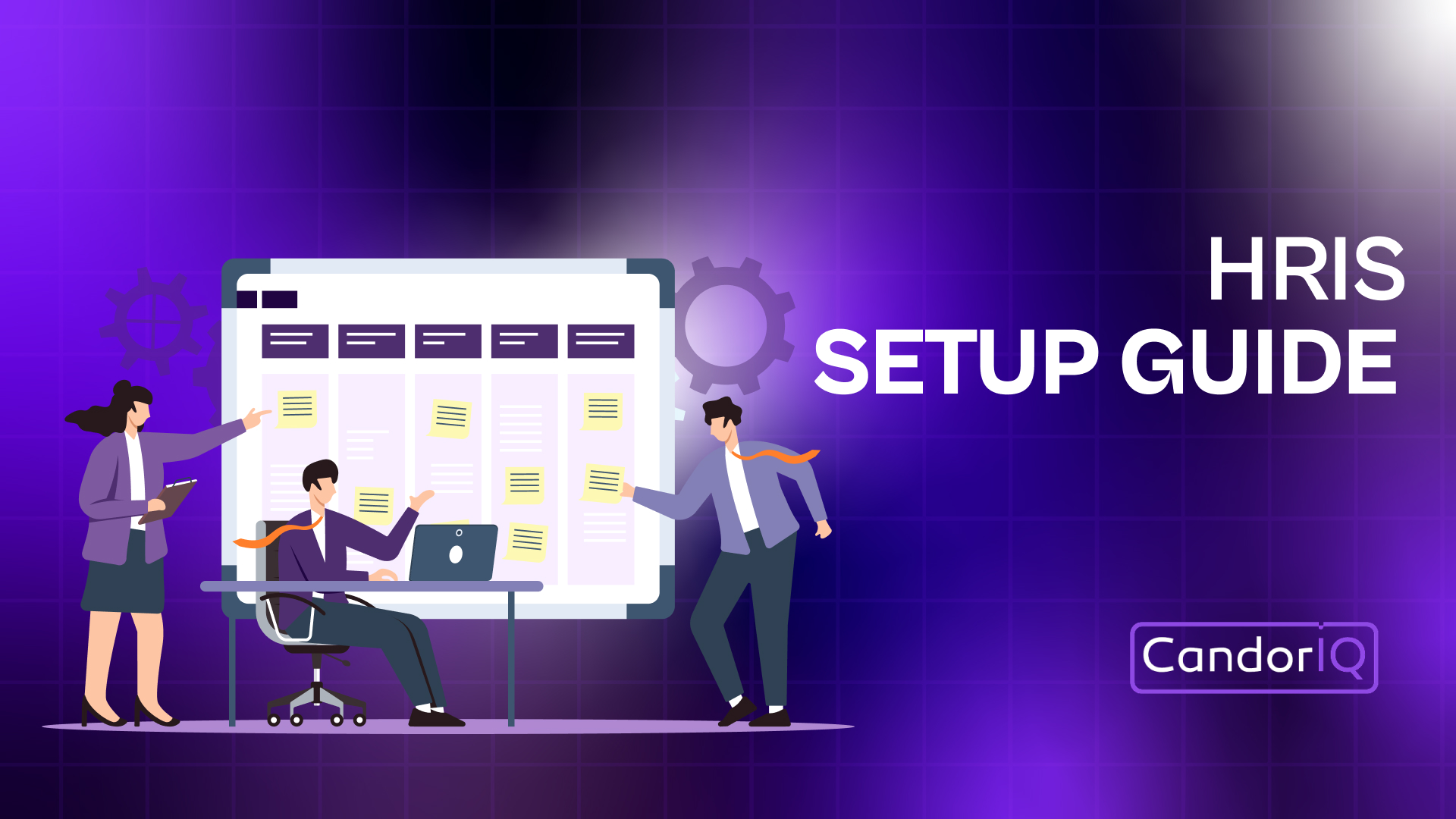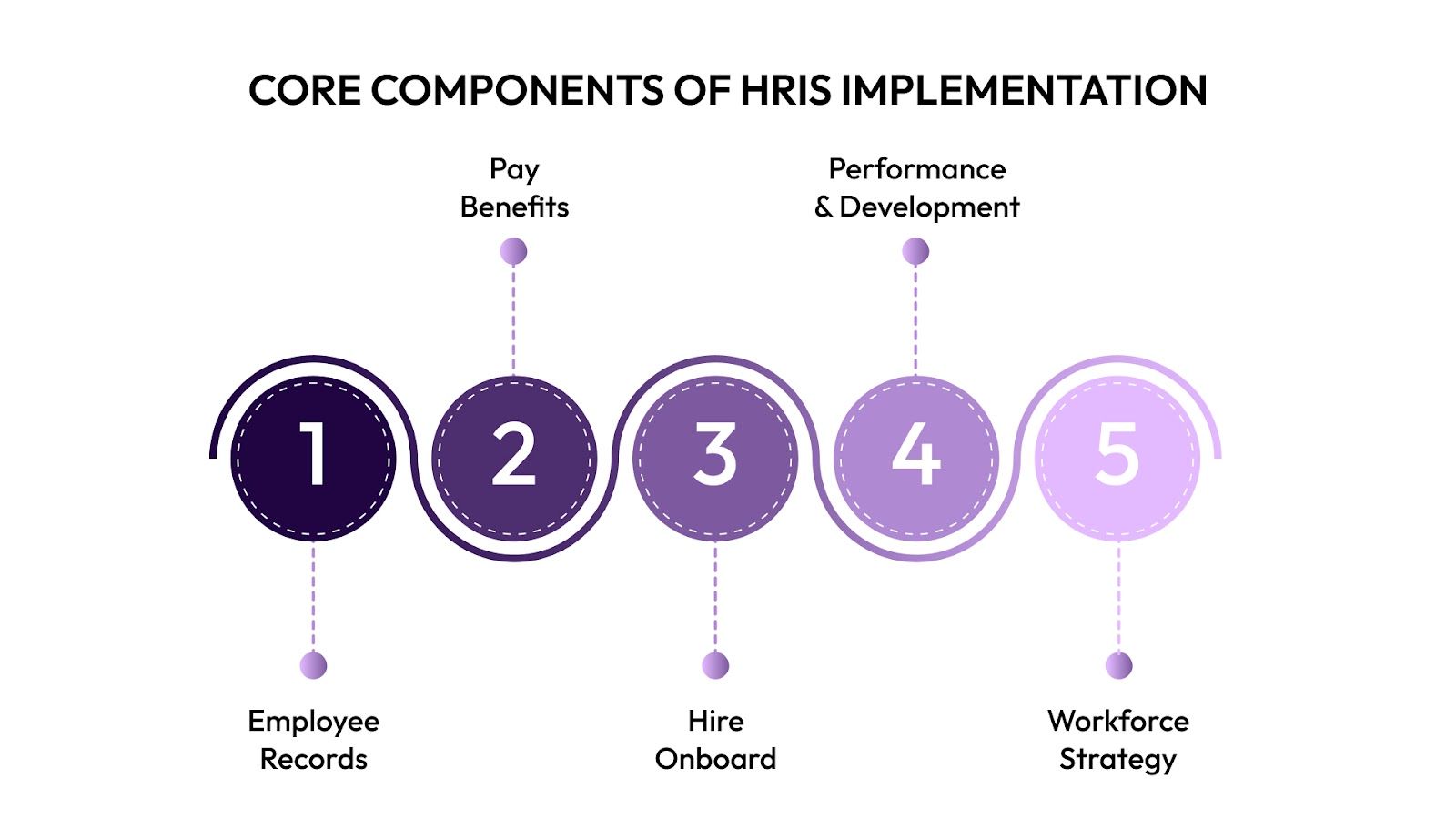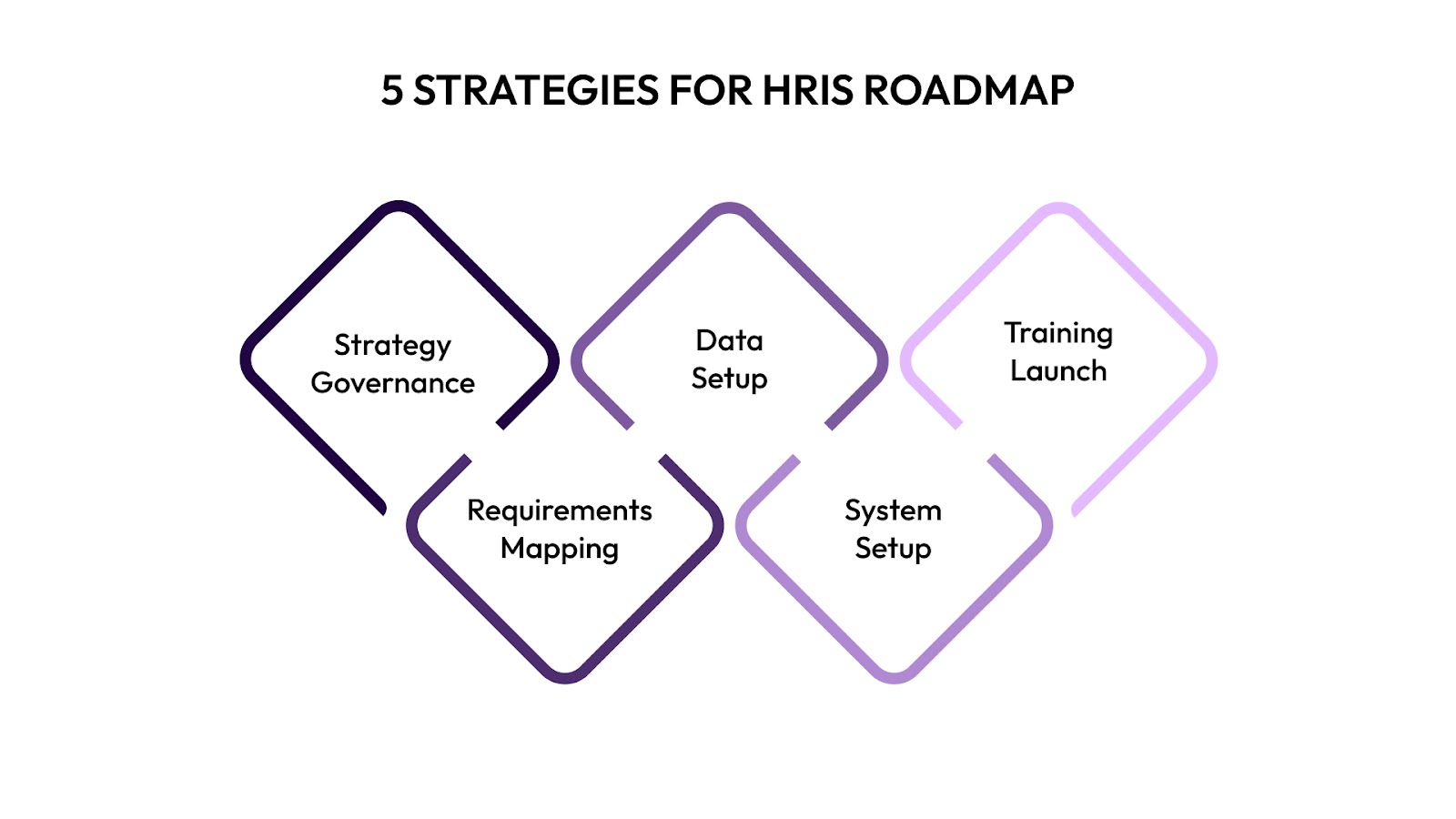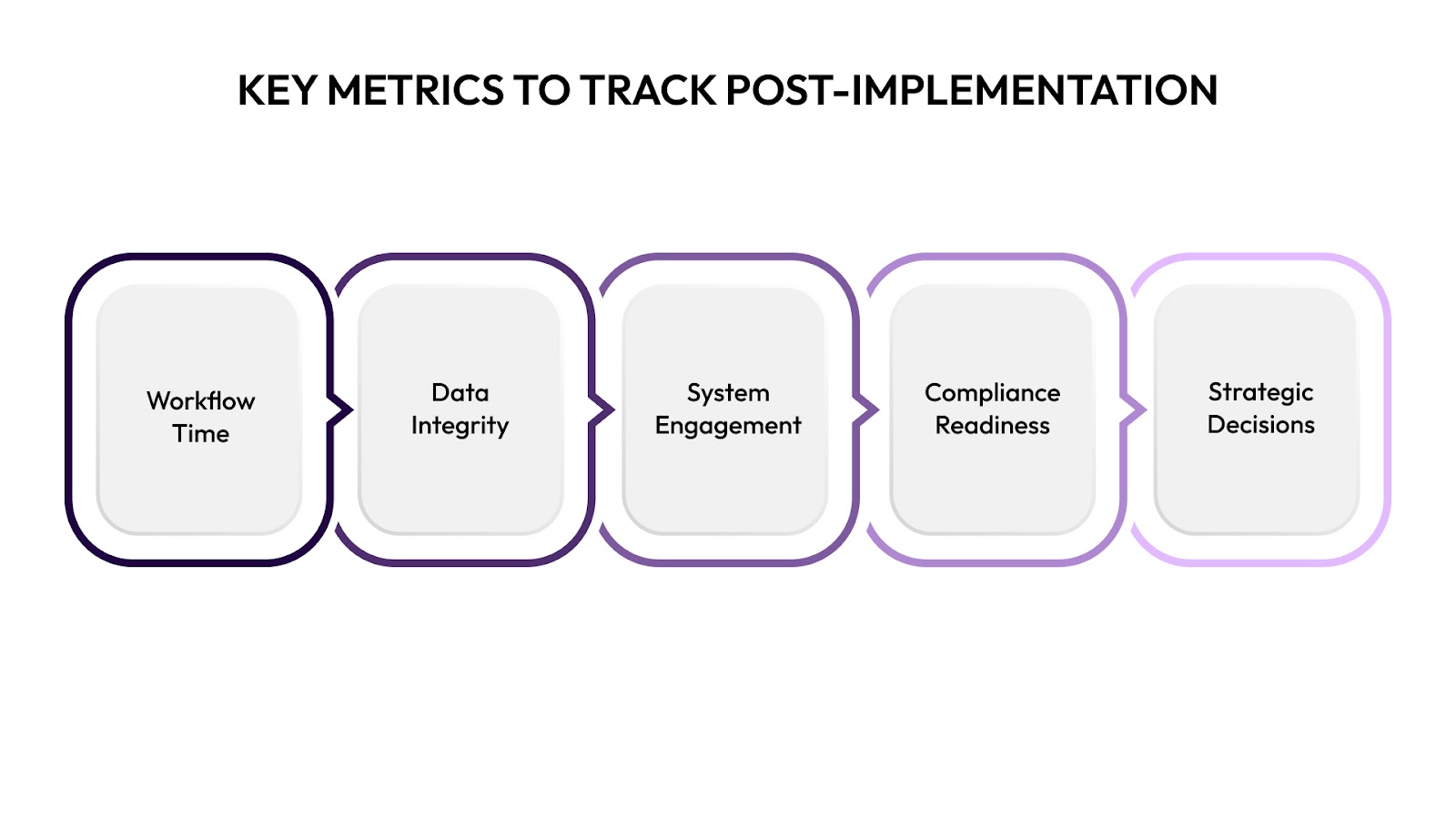5 Steps for Successful HRIS Implementation
Implement HRIS successfully! Define goals, build a team, choose the right solution, test thoroughly, and train effectively. Start now!

TL;DR
- HRIS implementation is a critical transformation that aligns people, processes, and platforms across HR and Finance.
- We understand that for fast-growing organizations with lean HR and finance teams, managing the complexities of HRIS implementation can feel overwhelming and resource-intensive.
- The five key steps: Define objectives, assess requirements, clean data, configure & test, and train & roll out.
- A strategic rollout improves data accuracy, process automation, compliance, and decision-making visibility.
- Post-launch success relies on continuous monitoring of metrics like adoption rates, process times, and system reliability.
Before diving into implementation challenges, first understand what HRIS is and why it matters to your organization.
In this article, you’ll learn the 5 ways of HRIS implementation that ensure alignment, adoption, and long-term value. We’ll walk you through a strategic, phased approach that reduces risk, improves data integrity, and sets up your HR and Finance teams for scalable success.If you’re planning the development and implementation of HRIS—especially in a fast-growth organization scaling headcount 2–3x annually—this is the blueprint you can’t afford to skip.
What is HRIS Implementation?
HRIS implementation is the structured process of selecting, configuring, integrating, and deploying a Human Resource Information System that centralizes your core HR operations, such as payroll, benefits, compensation, performance, and employee data management.
But for executives like you, it’s not just a technical rollout, it’s a business-critical transformation that directly impacts data integrity, workforce planning, and organizational agility.
According to a 2024 SHRM report, nearly 1 in 4 organizations report that their HR tech implementations fail to meet expectations due to unclear objectives, poor data migration, or low user adoption. A thoughtful approach can prevent these pitfalls and position your company for scalable, cross-functional success.
Why It Matters to Your Organization
As your headcount grows, especially in organizations managing between 50 and 5,000 employees your workforce becomes more distributed, and compliance risks increase, manually managing HR functions becomes unsustainable. Whether you’re operating remote-first teams across geographies or juggling multiple budgets across business units, the development and implementation of HRIS offers strategic advantages such as:
- Centralized Workforce Data: Replace siloed spreadsheets with a single source of truth.
- Process Efficiency: Automate recurring tasks, like payroll runs, compensation cycles, and headcount requests.
- Compliance & Risk Reduction: Ensure audit trails, data security, and regulatory alignment.
- Strategic Decision-Making: Provide HR, Finance, CFOs, and FP&A leaders with accurate, real-time insights that support compensation planning, workforce forecasting, and budget alignment.
Core Components of a Successful HRIS Implementation

A modern HRIS platform typically supports a wide range of functionality. When you’re planning your implementation, focus on these core components:
- Employee Database Management: Centralized records for role, tenure, compensation, location, and performance.
- Compensation and Benefits Integration: Sync pay bands, bonuses, equity, and total rewards with platforms like CandorIQ.
- Recruiting and Onboarding: Manage applicant tracking, new hire workflows, and onboarding progress.
- Performance and Development: Track reviews, promotion readiness, and skill development at scale.
- Workforce Planning & Forecasting: Enable integration with platforms that support headcount modeling, like CandorIQ.
HRIS vs. HCM vs. Payroll: What’s the Difference?
Understanding the distinctions between HRIS, HCM, and payroll systems is critical when designing your HR tech stack. Each serves a unique role, but only together can they support a scalable, data-driven workforce strategy.
- HRIS (Human Resource Information System): Core system of record for people data and administrative tasks.
- HCM (Human Capital Management): Broader suite that may include talent, learning, and workforce planning.
- Payroll Systems: Handle pay distribution, tax filing, and benefit deductions but often lack deeper planning or analytics functionality.
Integrating your HRIS with CandorIQ enables smarter compensation governance, headcount modeling, attrition forecasting, and real-time workforce insights, driving strategic outcomes.
By getting this step right, you give your HR and Finance leaders the infrastructure they need to lead with clarity and confidence.
5 Ways of HRIS Implementation: A Step-by-Step Roadmap for Success

Implementing an HRIS involves a planned approach. These five steps help align your systems, people, and strategy from the start, improving efficiency and reducing issues.
Step 1: Define Objectives & Governance Structure
Key Actions:
- Align stakeholders on primary goals like streamlining compensation cycles, automating headcount requests, or centralizing reporting.
- Form a governance team with representatives from HR, Finance, IT, and Ops to ensure alignment and accountability.
- Define decision-making rights, escalation paths, and clear KPIs (e.g., time-to-approve offers, data accuracy rates).
Step 2: Assess Requirements & Map Processes
Evaluate your current workflows. Where are the inefficiencies?
Key Actions:
- Document existing HR processes: employee onboarding, comp approvals, payroll handoffs, and headcount planning.
- Identify bottlenecks, data silos, and duplicate efforts across departments.
- Use this audit to define technical requirements such as modules needed, system integrations (e.g., CandorIQ, ATS), and custom fields.
Step 3: Clean Data & Prepare for Migration
Bad data leads to bad decisions, especially in workforce planning.
Key Actions:
- Audit and validate current datasets (employee records, pay bands, performance ratings, etc.).
- Remove duplicates, correct outdated entries, and fill missing fields.
- Set up dual maintenance of old and new systems during migration to maintain continuity and avoid disruption.
Step 4: Configure, Integrate & Test
Configure the system by setting up modules for employee data, compensation bands, organizational structure, and headcount forecasting, and establish connectivity with related platforms.
Key Actions:
- Configure modules for employee data, comp bands, org structure, and headcount forecasting.
- Integrate with HRIS-adjacent platforms: ATS, payroll, equity tools, and CandorIQ for compensation and planning intelligence.
- Conduct testing in three phases: unit testing, integration testing, and user acceptance testing (UAT).
Step 5: Train, Roll Out & Optimize
A system’s success depends heavily on user adoption, which requires comprehensive training, clear communication, and ongoing support.
Key Actions:
- Deliver role-based training (HR teams, managers, executives) tailored to platform functionality.
- Launch in phases, starting with internal HR users, then expanding to managers and end-users.
- Collect feedback post-rollout and refine workflows as needed.
Successful development and implementation of HRIS isn’t about launching fast, but launching it right. Each of these five steps ensures your system not only functions, but drives strategic outcomes across compensation, retention, and planning.
Curious how CandorIQ can fit into your HRIS stack for smarter compensation and headcount planning? Let’s explore what a tailored roadmap could look like for your team—schedule a friendly demo when you’re ready.
Measuring Success & Next Steps
Completing the development and implementation of HRIS is just the beginning. To maximize the return on your investment, you need to continuously evaluate performance and identify optimization opportunities.
Key Metrics to Track Post-Implementation

Once your HRIS is in place, monitor these high-impact metrics to assess success:
- Time-to-Complete HR Processes: Measure reductions in manual workflows, such as time-to-fill, comp cycle duration, and headcount approvals.
- Data Accuracy & Consistency: Track error rates in employee records, payroll, and reporting. A well-implemented HRIS reduces reconciliation tasks across HR and Finance.
- System Adoption & Engagement: Use login rates, task completions, and feedback to gage employee and manager engagement.
- Audit Trail & Compliance Readiness: Ensure all workflows (comp changes, promotions, approvals) are traceable and report-ready for audits.
- Strategic Decision-Making: Evaluate how quickly and confidently HR, Finance, and leadership can access data to make workforce decisions.
Continuous Improvement with CandorIQ
Implementation doesn't end at go-live. Modern organizations treat the HRIS as a dynamic platform that evolves with business needs. That’s where CandorIQ becomes a force multiplier:
- Add advanced compensation analytics and equity modeling: Eliminate comp guesswork and ensure pay fairness at scale.
- Automate headcount scenario planning and forecasting: Model budget impact before making hiring decisions.
- Integrate with your existing HRIS to enhance strategic visibility: Create a unified system that connects compensation, planning, and talent data in one place.
Use insights from your current system’s performance to identify enhancement areas, such as CandorIQ, ensuring tech investments align with long-term people strategy rather than just short-term process automation.
Conclusion
The true value of your HRIS isn't just in digitalizing HR tasks, but in unlocking smarter, faster, and more aligned workforce decisions. By following these five steps to HRIS implementation, you lay a solid foundation for operational efficiency, data-driven planning, and scalable growth.
But to go beyond the basics, you need tools that turn your HRIS into a strategic powerhouse.
CandorIQ seamlessly integrates with your HRIS to optimize compensation, streamline headcount planning, and deliver insights your teams can act on, confidently and in real time.
Book your demo with CandorIQ and transform your workforce strategy today.


